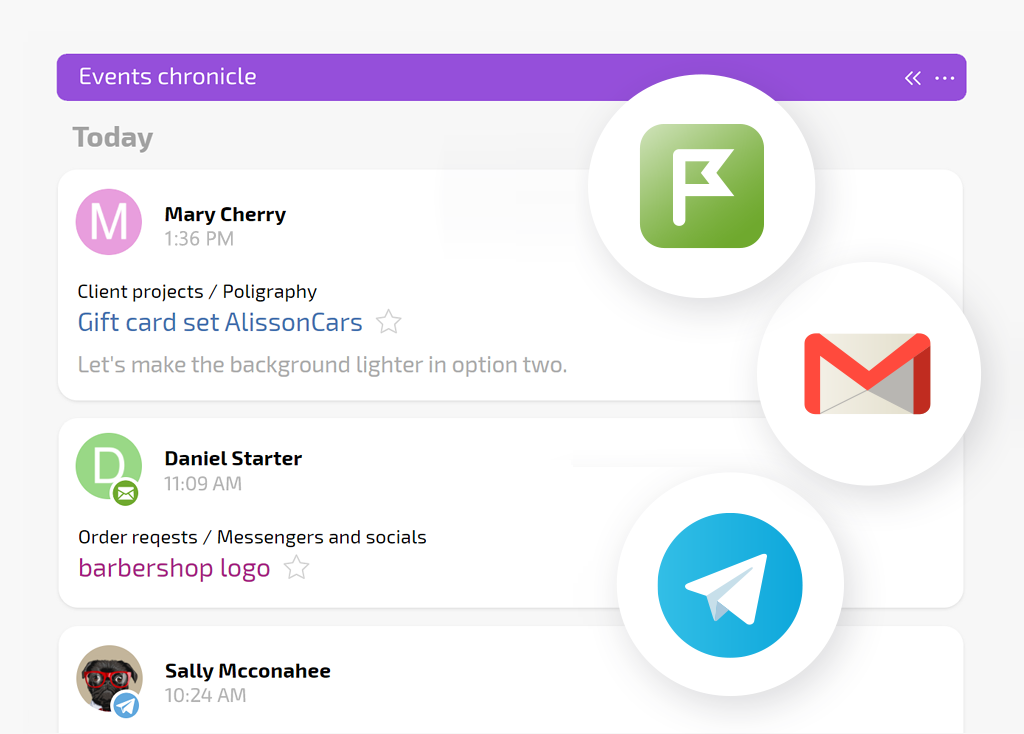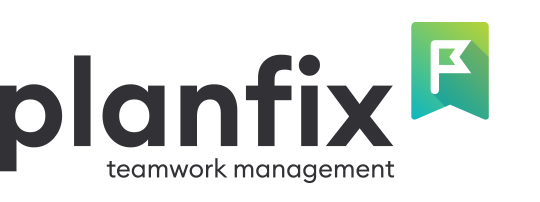
What makes a business truly successful? It’s not just a strong strategy, solid funding, or a talented team, but how well all these elements work together.
After all, you can develop the most brilliant plan, but without clear communication between people, it remains just that: a plan. Likewise, you can hire the best professionals, but without a culture of open dialogue, their potential will be lost in the noise.
The point is that communication isn’t just a technical layer. For many businesses, it’s the glue that helps an organization grow, adapt, and achieve what it sets out to do. Fortunately, if you’re looking for ways to improve communication at work, you’re already one step closer to unlocking your team’s true potential.
Why Team Communication Matters
Communication in an organization is not just about exchanging messages – it’s the basis for productive and unified teams. It influences pretty much everything, from employee motivation and decision-making to the company’s ability to adapt. When team members communicate clearly and consistently, tasks are completed more efficiently, errors are reduced, and employees feel involved and engaged. When communication is lacking or unclear, it leads to a chain reaction of problems that affect both people and processes, such as:
- Lower productivity. Employees who don’t fully understand their goals or priorities may waste time, repeat tasks, or overlook important details.
- Lack of engagement. Poor communication can make employees feel left out or disconnected from the bigger picture.
- Workplace tension. Misunderstandings often escalate into conflicts that damage teamwork management and morale.
- High staff turnover. Employees who lack feedback, direction, or support will eventually seek a healthier environment.
- Client issues. Delays, mistakes, and disagreements within the team can quickly impact customer satisfaction and your brand’s reputation.
- Missed deadlines. Without clear communication between departments or team members, deadlines are lost and projects stall.
Avoiding these challenges means establishing an open, transparent, and effective communication system. This includes regular team meetings, clear task assignments, and user-friendly communication tools. It also means fostering a culture that encourages feedback.
8 Strategies to Improve Team Communication Skills
When employees can share their ideas freely, know what is expected of them, and feel supported in their roles, the business becomes more resilient, adaptable, and competitive. If you’re wondering how to improve communication in workplace, you should try to embrace the following strategies.
1. Address Conflicts Quickly
Conflict is inevitable in any team, and resolving it quickly and constructively is crucial to maintaining a healthy working environment. But procrastinating or ignoring tensions can only exacerbate them and negatively impact productivity.
Imagine: two employees are arguing over which project deserves the highest priority. Instead of letting the frustration escalate into a personal rivalry, the team leader intervenes to moderate the discussion. Everyone presents their arguments, and a compromise is found, perhaps by blending ideas or redistributing resources. This type of intervention defuses tensions and strengthens trust. More importantly, it shows that building team communication is more important than individual success.
Effective conflict resolution helps create a workplace where employees feel heard, valued, and less stressed, allowing work to be completed more efficiently.
2. Encourage Everyone to Speak Up
One of the best things you can do as a business leader is create an environment where employees feel safe and can share their thoughts.
Open discussions not only improve collaboration, they have the power to spark creativity and innovation.
There are three key factors to achieving this:
- Organize regular meetings where everyone can contribute ideas or raise concerns.
- Use brainstorming sessions to include some of the quieter voices.
- Encourage active listening so that people feel that their input really matters.
When team members know their ideas are valued, they’re more engaged and motivated. So, if you’re wondering how to improve your team communication skills, start by making every voice count.
3. Support Bottom-Up Communication
Employees often hesitate to speak up about problems, typically because they fear backlash or criticism. But when communication is encouraged from the bottom up, teams can recognize bottlenecks more quickly and improve work processes. This creates trust and opens up new channels of communication. Here are a few ways you can get started:
- Consider using anonymous surveys to allow employees to provide more honest feedback.
- Schedule face-to-face meetings with managers to create an open space for sharing ideas and addressing concerns.
- Establish open forums where team members can suggest improvements without fear of criticism.
If you want to know how to improve communication in workplace, this is an excellent place to start. Because when
employees see that their feedback can lead to real change, loyalty and trust skyrocket.
4. Aim for Transparency
Noting fosters trust and enhances team spirit, like honest and open communication at all levels of the company. Transparency helps employees understand business goals and their role in achieving them. The best part? It’s easier than you might think to foster this type of open environment. Here are a few suggestions:
- Keep the team up to date with company news so they won’t feel blindsided by changes.
- Explain essential business decisions as well as their impact on the team.
- Make strategic plans accessible to everyone rather than just a select few “higher ups”.
Again, if you’re wondering how to increase communication in the workplace, transparency is a smart place to start. The more employees understand how their work fits into the bigger picture, the more engaged and accountable they become.
5. Set Clear Expectations
Vague goals and unspoken assumptions are a recipe for confusion. If team members don’t fully understand what’s expected of them, they’re likely to duplicate work, miss deadlines, or feel uncertain about their value. Well-defined expectations help everyone stay on track.
Here’s what that looks like:
- Define specific goals and deadlines for each task, allowing everyone to stay on track.
- Clarify roles and responsibilities to avoid duplicate efforts and missed action items.
- Review and update priorities as needed, especially when things change.
Providing clarity reduces stress, increases productivity, and ensures employees work with confidence. It’s a core part of how to improve communication at work, and most teams notice the difference right away.
6. Schedule Regular Team Meetings
Effective communication isn’t about volume, but rhythm. Regular team meetings help create a rhythm by keeping everyone aligned, flagging issues early on, and providing space for brainstorming and problem-solving. Of course, for meetings to be effective, they need structure.
Here’s how to keep them productive:
- Set an agenda to help make sure the meeting stays on topic.
- Limit the meeting time to avoid burnout, and don’t push to hit the mark if the agenda is complete.
- Document decisions clearly so that they can be put into action.
If you’re wondering how to increase communication in the workplace, regular team meetings are one of the easiest ways to keep employees engaged and informed. Just remember that more meetings aren’t the answer. Instead, you need to make each one count.
7. Provide Consistent Feedback
Feedback is often treated as an event. For many companies, it’s something that happens once a year in a performance review. But when you embrace it as a regular part of the workday, feedback can help employees develop, adjust their work, and feel like their contributions matter. Still, not all feedback is created equal.
Here are some tips to make it more effective:
- Keep criticism constructive and make straightforward suggestions for improvement.
- Recognize not only the results, but also the effort behind them.
- Give feedback regularly throughout the year rather than waiting for annual appraisals.
Balanced feedback fosters a culture of trust and development. Managers considering how to improve communication within a team often do well when they start off with thoughtful, ongoing feedback.
8. Provide the Right Collaboration Tools
Modern tools can make teamwork easier, especially when you’re working remotely. The correct setup helps streamline workflows and reduce friction, ensuring everyone stays on task and everything runs as smoothly as possible.
Here are a few essentials to look for when considering collaboration tools:
- Team chats (Slack, Microsoft Teams, Planfix) for fast updates
- Project management systems (Trello, Planfix, Jira) to track progress. Cloud storage (Google Drive, Dropbox) for shared access to documents
When your team has the necessary tools, things run more smoothly. These systems play a key role when it comes to improving communication within a team and making collaboration consistent.
Tools That Help Teams Talk to Each Other
Any manager will tell you that getting a team to communicate effectively isn’t always a walk in the park. In fact, it’s more like trying to coordinate a walk in the part where half the people have headphones on and the other half are looking at different trail maps. The good news?
Improving communications within a team doesn’t have to be hard, provided you’ve got the right tools. So, what exactly are the “right tools?”
- Chats and messaging apps – These are the virtual hallways where quick updates, funny memes, and “urgent” questions happen. They’re vital when your teammate lives five time zones away but needs that spreadsheet now. Sometimes, a simple “ping” can save an entire project from going off the rails.
- File sharing – Cloud platforms are like the team’s collective memory. Instead of digging through 17 email threads or renaming files a hundred times, everyone works on the latest version. It’s neat, efficient, and (almost) entirely panic-free.
- Video conferencing – Sometimes, you just need to see someone’s face. Whether it’s a Monday morning huddle or a quick sync to solve an issue, video adds that human touch that Slack emojis just can’t match. Plus, it’s a great excuse to wear a clean shirt.
- Real-time document editing – No more “Final_v6_FINAL-this-time-I-swear.docx.” Working together in one doc avoids version chaos and helps decisions happen faster. Collaboration becomes smoother, edits occur in the moment, and you prevent those endless back-and-forth emails.
- Project management platforms – Think of these as your project’s own “mission control.” From big-picture deadlines to tiny sub-tasks, everyone can stay in sync rather than constantly wondering who’s doing what. And with notifications and dashboards, you always know what’s moving and what’s stuck.
Building a Communication Hub That Works in Planfix
If your team’s inbox is overflowing and no one knows who’s doing what, welcome to the story of AlphaMarket. As this retail chain grew to dozens of stores, the cracks in its internal communication finally started to show. Tasks fell through the cracks, updates got lost, and managers struggled to keep track of which workers were assigned to which tasks.
That’s when they turned to Planfix. And no, it wasn’t just about sending messages, although that’s part of it too. Planfix gave them a single, unified space where conversations, tasks, files, and even entire projects could be brought together. Think of it like a digital headquarters, where everything is properly tracked, searchable, and structured.
Communication in Planfix

For employee communication to be effective, all interactions must be transparent and accessible at the right time and in the right place. Luckily, Planfix includes tools that help organize communication efficiently.
- The built-in chat in each task helps reduce the email load and facilitates internal communication.
- Each task’s email correspondence is centralized, eliminating duplicate messages.
- Flexible access settings ensure that information is securely shared with the right employees.
- By integrating messengers and emails, scattered communication channels can be brought together into a unified space.
These benefits are what allowed the AlphaMarket team to discuss work matters quickly and conveniently without the risk of losing important information.
Document Flow
Nobody likes chasing down the “right” document versioning or waiting days for approval. At AlphaMarket, this was part of everyday life – at least until Planfix changed the game, and funny enough, cleaning up document flow turned out to be a big step in the AlphaMarket team figuring out how to improve communication at work. Here’s how they did it:
- File sharing sped things up across branches. Right away, they had less back and forth and more “approved and done.”
- Version control ensured that there was no more confusion about which draft was the final one. The entire team could see exactly what was changed and when.
- Collaborative editing made teamwork smoother and less chaotic.
Now, the team always works with the latest files, and what is the approval process? Fast, clear, and finally painless.
Calendars and Planners

Even the best teams can fall apart without clear employee work schedules. AlphaMarket knew that if they wanted to stay coordinated, they needed more than sticky notes and scattered reminders.
Planfix brought structure to their daily work:
- Shared task planning ensured that everyone knew who was doing what and when. Suddenly, they no longer had to worry about crossing wires.
- Smart reminders popped up before things got out of hand, helping the team stay focused and on schedule.
With Planfix, the team at AlphaMarket always has a precise and up-to-date calendar at their fingertips. Better yet, the most critical tasks are always at the forefront.
Collaborative Project Management
At AlphaMarket, running projects felt like juggling blindfolded. There were simply too many moving parts and too little overview. That changed with Planfix. However, it wasn’t just about ticking boxes. Instead, it was about collaboration that moved things forward.
- Assigning tasks made responsibilities clear and helped everyone stay on top of things.
- Live project status tracking made it easy to identify bottlenecks before they became a significant issue.
- Flexible reports and built-in data tags enabled the team to reflect, adjust, and improve with each sprint.
The result? Faster delivery, fewer errors, and much smoother collaboration between departments.
Final Thoughts
Communication isn’t just a tool – it’s the beating heart at the center of every successful team. It fosters culture, brings people together, and plays a significant role in determining how motivated and happy employees are at work. Want to know how to improve team communication skills?
The companies that invest in effective communication not only avoid misunderstandings but also build teams that enjoy working together. That’s why they enjoy less conflict, more trust, and better results across the board.

